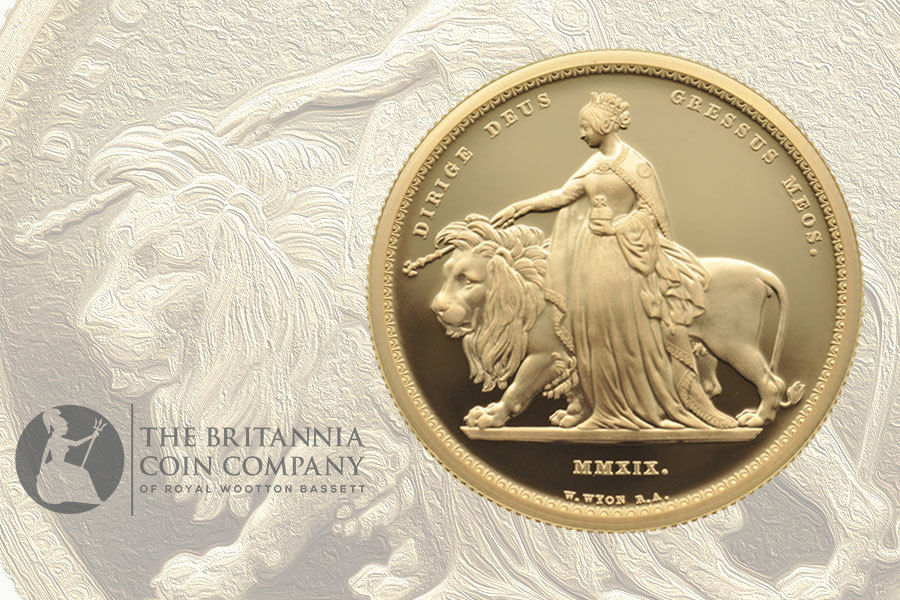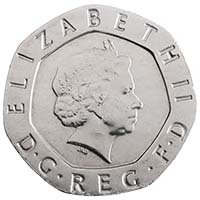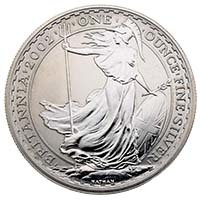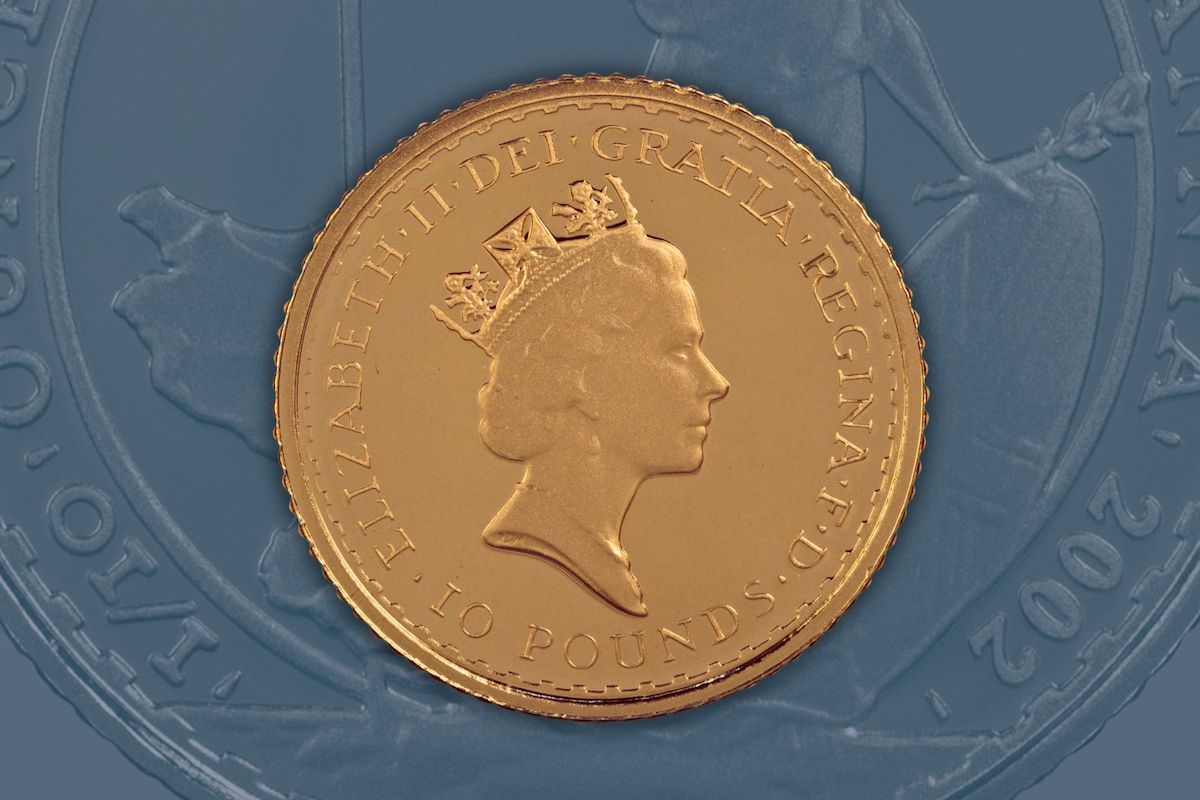
Modern error coins are pretty rare and can be very valuable.
Most collectors of British coins have a mental list of known errors to look out for including missing dates, misalignments and doubled dies.
We're pretty sure most of you have not heard of this one though.
Muled 2002 tenth ounce gold Britannias seem to be vanishingly rare and theres not much information about them online. We've gathered together everything known about these scarce error coins so you can check your old Britannia sets for this strange Royal Mint mistake.
What Are Mule Coins?
Coins are struck with a pair of dies, one featuring the obverse design and the other the reverse. Usually, these dies are created to pair together, creating a cohesively designed product with text and motifs spread across both sides.
When a coin is struck with non-matching dies we call this a 'mule'. The name comes from the offspring of a horse and a donkey, a hybrid animal with a mixture of traits from both parents.
In the past, mules might have been created knowingly when one die became too worn down. Today, they are more commonly the result of a production mistake.
Since modern mints have strict quality control procedures the likelihood of a mule coin entering circulation or being sold to collectors is slim. When it does happen, these coins can become sought-after as rarities, demanding prices well above similar non-mule issues.
Notable Royal Mint Mule Error Coins
Undated 20p - In 2008 some UK Twenty Pences were minted without a date. This happened because the definitive 20p design was changed in 2008 with the year being featured on the obverse, rather than the reverse as was the case with the old design. The Royal Mint estimates that less than 250,000 of the 136 million 20ps minted in this year were affected. Nevertheless, these mule coins sell for £100.00 or more on platforms like eBay and can still be found in change.
2014 Britannia-Lunar Coins - In 2014 some one ounce silver Britannia bullion coins were struck with an obverse intended to be used for Chinese Year of the Horse 1oz coins from The Royal Mint's Lunar range. About 17,000 2014 mule Britannias were struck before the issue was identified. Another 38,000 Year of the Horse coins also bear the wrong obverse. 2014 Britannias should show a 'denticle' detail around the obverse rim while Lunars should have a plain rim. While there are quite alot of these 2014 mules out there they still sell for quite a bit more than the standard one ounce coins from each range.
1994 Double Sovereign - A very limited number of 22-carat gold Two Pound coins were produced by The Royal Mint in 1994 with a special Bank of England tercentenary design. Of this number, a few were issued with the incorrect obverse. On these valuable error coins the denomination is missing. It is unknown exactly how many of these gold coins are in the hands of collectors but they command a significant premium when they come to the market.
Tenth Ounce 2002 Proof Britannias
A lesser-known British error coin was struck in 2002 and issued as part of 2002 4-coin gold proof Britannia sets.
Coins issued by The Royal Mint in 2002, Britannias included, should have featured Ian Rank-Broadley's portrait of Queen Elizabeth II to the obverse. Instead, an unknown number of 1/10oz gold proof Britannias feature the previous definitive coinage effigy by Raphael Maklouf.

Obverse and reverse of a muled 2002 gold proof tenth ounce Britannia.
The obverse legend on these mule coins reads 'ELIZABETH · II · DEI · GRATIA · REGINA · F · D' with '10 POUNDS' below the portrait.
The reverse features the correct motif: Philip Nathan's classic 'standing Britannia' holding trident, olive branch and shield. The legend reads '1/10 · OUNCE · FINE · GOLD · BRITANNIA · 2002 ·'.
This error is not noted in Spink's guide to decimal coinage, unlike the mules others listed above.
Definitive Coinage Portraits Of Elizabeth II
There were five different definitive portraits used on UK coinage during the reign of Queen Elizabeth II (reigned 1952 to 2022).
From 1985 until 1998, all new coins issued by The Royal Mint featured a head-and-shoulders portrait of Her Majesty by Raphael Maklouf, sometimes referred to as the 'Third Head'. In Maklouf's portrait, Elizabeth is shown facing right and wearing the George IV State Diadem, along with earrings and a necklace.
In 1998 a new coin effigy was introduced. This fourth portrait was the work of British sculptor Ian Rank-Broadley and realistically represents the Queen as a grandmother, crowned with Queen Mary's Girls of Great Britain and Ireland tiara. It is a very different portrait to Maklouf's youthful profile and was used until 2015.
The 2002 error tenth Britannias are likely to have been produced using an old die though why this was anywhere near The Royal Mint's production line four years after Maklouf's portrait had been replaced is a complete mystery.
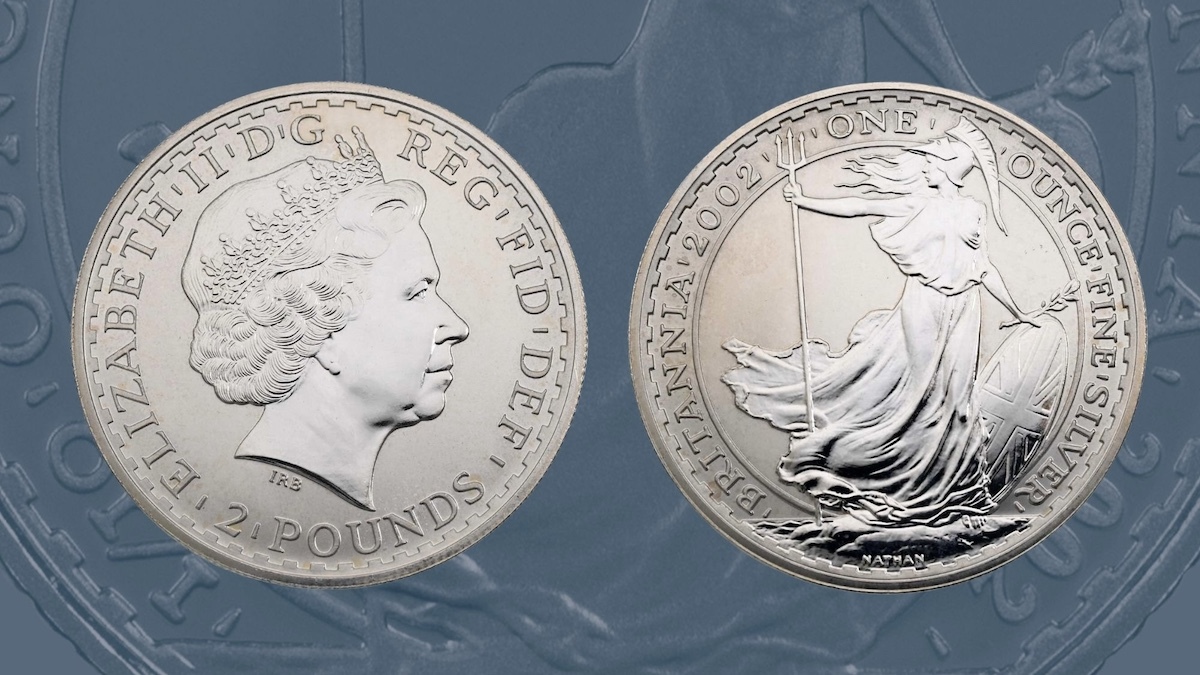
This silver bullion one ounce Britannia from 2002 shows the correct pairing of obverse (Ian Rank-Broadley's portrait) and reverse (Philip Nathan).
How Rare Are 2002 1/10oz Gold Mule Britannias?
According to Spink, 1,500 individual proof tenth-ounce 2002 Britannias were issued by The Royal Mint in their own presentation boxes. A further 945 were issued in four-coin sets.
So far, it seems that all known error coins of this type have originated in the collectors sets.
Though the coins were produced in 2002 the error only seems to have come to light recently and still remains little known. Some sources have estimated that the total population of 1/10oz mules is 10 or less though there could be more out there undiscovered.
While some error coins have been acknowledged by The Royal Mint, this one has not.
It is challenging to put a price on a rarity of this kind though you can be sure a dedicated Britannia collector would pay well above the average price for a tenth-ounce gold coin to own this piece of numismatic history.
Frequently Asked Questions
There are a small number of known errors impacting Royal Mint Britannias including the 2014 Britannia mule struck with an obverse designed for a Year of the Horse coin. This error impacted some 17,000 coins. A lesser-known mule error affected the 2002 tenth ounce gold Britannia.
So few muled 2002 Britannias are known that it is hard to put a price on these rare coins. The error has only recently been uncovered and is not listed in Spink’s guide to British decimal coinage. Collectors value these coins well above a standard tenth ounce Britannia.
It is unknown how many muled 2002 gold proof tenth ounce Britannias were struck but some estimates put the number at less than 10. The known examples have all come from gold 4-coin Britannia sets of which 945 were issued by The Royal Mint in 2002.
48,816 silver bullion Britannias were struck by The Royal Mint in 2002 making it one of the lowest mintage years for these investment coins. Gold bullion coins and proof Britannias from 2002 were produced in smaller quantities.
The Royal Mint’s tenth ounce gold Britannias have a face value of £10 and contain 3.11 grams of pure gold (0.1 troy ounces). The Britannia Coin Company buys tenth ounce Britannia bullion coins for a minimum of £227.75 with proof coins commanding a higher price.


.jpg)
